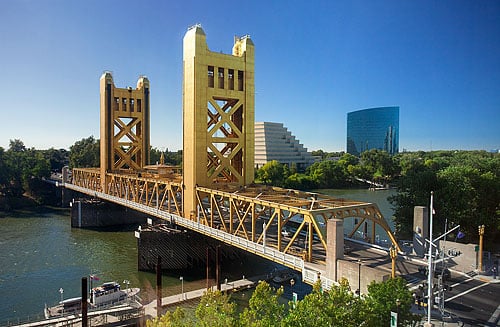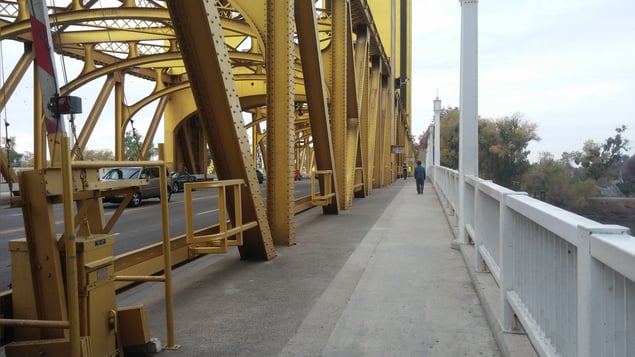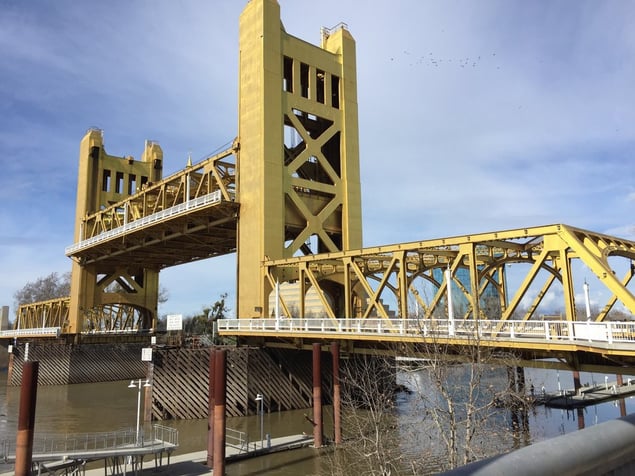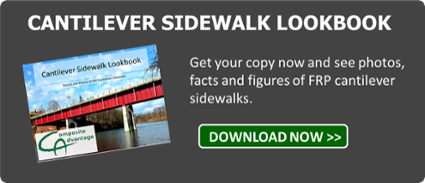In my last blog, I discussed the side trip I recently took to Sacramento, California’s Tower Bridge. I wrote up a report on my visual inspection of the bridge's FRP cantilever sidewalk. This drew a number of questions from people interested in the bridge’s history. Here's a quick synopsis.
As I mentioned in the blog, Tower Bridge has the distinction of being the first bridge fitted with an FRP cantilever sidewalk. Even better, the bridge is considered to be one of the most beautiful vertical lift bridges in operation today. Though just skin deep, its “looks” hide unappealing functional bridge components, much like a vintage wood entertainment center hides a TV and its unsightly tangle of electronic devices and cords. Attractive appeal is one of the characteristics that makes Tower Bridge unique.
Why is this unique? The structure is one of only a handful of bridge projects that prioritized aesthetics. Believe it or not, architect (not an engineer) Alfred Eichler had first crack at the project. Eichler first designed the structure’s appearance, then tasked bridge engineers to design it. Installed in 1935, functional yet decorative bridge elements include:
- Solid metal panels hide the bracing on the tower posts, counterweights and counter chains.
- X-bracing marks tower faces and are cleverly crafted so that visitors like myself see only flat surfaces, not the flanges and bracing webs hidden behind them.
- Original, ornate riveted lighting and steel caps on the tops of the tower hide the sheaves.

Minimal use of lattice and v-lacings contribute to the clean look of the lift span and approach truss spans. The arched design of the trusses supporting the portal and sway bracing is also considered unique. Its classification as a strong example of Streamline Moderne influence, a form of Art Deco, earned it a spot on the National Register of Historic Places in 1980.

In 2006, the Sacramento City Council recognized Tower Bridge and its sidewalk as the primary pedestrian/bikeway connection across the Sacramento River for both Sacramento and West Sacramento. To relieve the bottleneck that growing foot and bike traffic was sure to cause, the city manager authorized funds to widen the sidewalks from 3 feet to 10 feet. However, center span weight limits prohibited the use of concrete for the new sidewalks. FRP composite material was identified as a lightweight alternative. The cantilever sidewalk helps support the flow of traffic across the structure with the added benefits of corrosion-resistance and long life. I hope that Alfred Eichler would like this 21st century addition to his Art Deco design.

Want more info on cantilever sidewalks or FRP composite bridges and bridge decks? Contact us anytime.

